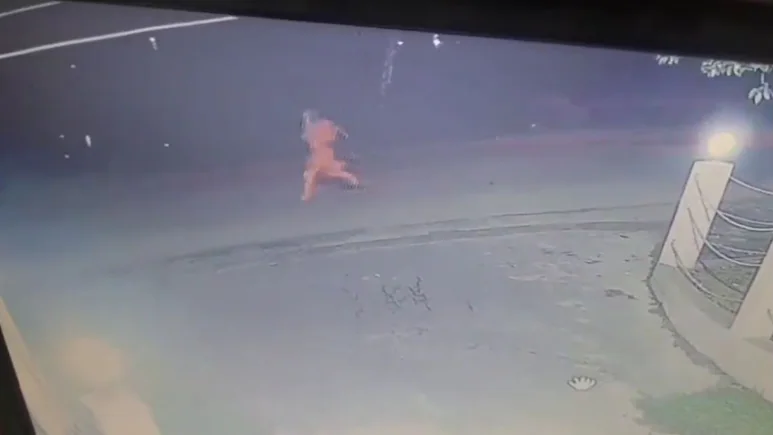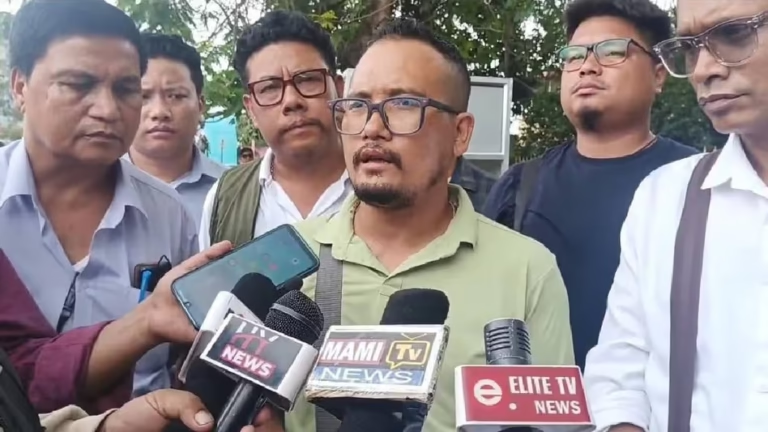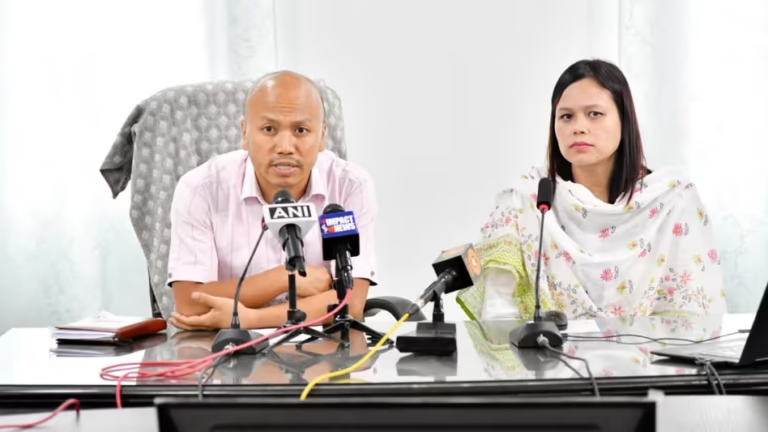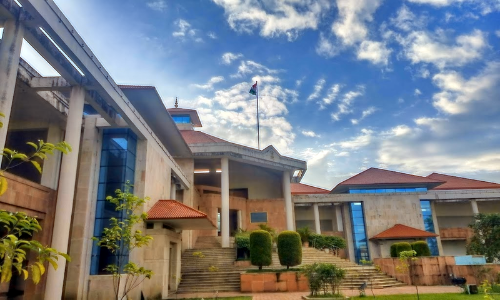Deaf-Mute Woman Gang-Raped in UP; Police Arrest Two After Encounter Within 24 Hours
Short summary
A 22-year-old deaf and mute woman in Balrampur, Uttar Pradesh, was allegedly kidnapped and gang-raped while returning home from a relative’s place. CCTV footage showed the victim running but reportedly captured gaps — reportedly outside the residence of top district officials where cameras were off. Police say they tracked down and arrested two suspects within 24 hours after a pre-dawn encounter during the manhunt; the accused were reportedly injured and taken to hospital. The story has reignited debates about crimes against disabled people, the reliability and oversight of CCTV and local policing, and the ethics of “swift justice” in the form of encounters.
Introduction — why this story hits a nerve
Think about walking home after visiting family — only to realise that a routine walk can turn into the worst day of your life. That’s what happened to a young woman in Balrampur, Uttar Pradesh. The attack reads like a horror story: a vulnerable woman with a disability, an allegedly premeditated abduction, a remote spot just a few meters from top officials’ residences, dormant CCTV at crucial moments, and an immediate police manhunt that ended in an early-morning confrontation. It’s a raw, emotional headline, but it’s also a prism through which we can examine crime prevention, policing, disability rights, and public trust
This article breaks the incident down step-by-step, explains why the details matter beyond the headline, and asks the harder questions: What does quick police action mean in a democracy? Does a faster arrest substitute for fair process? And how do we better protect people who are already vulnerable — particularly those with sensory disabilities?
What we know: a timeline of the incident
- Monday evening: The woman left her maternal uncle’s house to return home. According to reports, she was intercepted by men on a motorcycle, forced onto the vehicle, and taken to a deserted field where the assault happened. Because the victim is deaf and mute, she could not call for help in the usual way.
- CCTV footage: A piece of CCTV footage circulated showing the woman running — troubling because this occurred just a short distance from the residences of the district magistrate and superintendent of police. Local reports said some cameras around those official quarters were off at the time, creating serious questions about surveillance reliability.
- Within 24 hours: Police reported that two men suspected of involvement were located in an early-morning operation and were arrested after an “encounter” — police say there was an exchange of fire or resistance, and the suspects were injured and taken to hospital. Local media and police statements emphasize the speed of the arrest.
This is the skeleton of facts reported by mainstream outlets. As with any breaking story, details can change as investigations progress, medical reports come in, and formal charges are framed.
The human angle — vulnerability and voice
Here’s a crucial point: being deaf and mute doesn’t make someone less human or less deserving of safety — but it can make them easier prey. A person with sensory disabilities may not be able to shout for help or hear approaching danger; navigation and community reporting mechanisms may not be designed for them. Imagine being stranded in a storm with no way to call for help — that helplessness is what survivors like this woman face during and after an attack.
That’s why accessibility in public safety matters: sign language-capable police responders, routine checks on cameras around high-security residential zones, and community awareness programs tailored to non-verbal alerts are not luxuries — they’re life-saving measures. This incident forces us to ask: are disability needs baked into our public safety architecture, or are they an afterthought?
Why the CCTV angle matters
CCTV is often framed as an automatic safeguard: cameras deter criminals, catch them in the act, and give police leads. But cameras are only useful when they’re functioning, actively monitored, and integrated into a rapid response system. In this case, reports that cameras near high-ranking officials’ residences were off have a sting: it suggests a blindspot exactly where one would expect heightened vigilance. Was it technical failure, neglect, or something else? The lack of footage where it could have mattered most raises questions about accountability and infrastructure.
Beyond the technical failings, there’s a symbolic cost: if the spaces near those charged with public safety can have blind spots, ordinary citizens may have even more. Doesn’t it make you uneasy that the people who are meant to keep watch might not be watching?
Police response: speed vs. scrutiny
The police response in this case was extremely rapid — arrests within 24 hours are often presented as proof that authorities are effective. There’s no doubt that fast action can prevent suspects from fleeing, tampering with evidence, or causing more harm. But rapid arrests, especially when accompanied by phrases like “encounter” and “exchange of fire,” can also raise concerns about due process and potential extrajudicial action.
Why? Because when police operations prioritise speed and immediate physical neutralisation, proper investigative steps — collecting forensic evidence, ensuring chain of custody, recording statements in front of magistrates — may be compressed. Civil liberties advocates have repeatedly cautioned that “encounters” sometimes shade into extrajudicial killings or staged encounters if not transparently investigated. That’s why independent oversight, forensic reports, and clear, public documentation of how the suspects were apprehended are essential to maintain public trust.
Put another way: catching the accused quickly is good, but catching them in a way that preserves justice for the victim, and proof that the legal system is working — that’s better.
Legal and forensic issues: preserving evidence and ensuring justice
A rape investigation must balance urgency with meticulous evidence collection. For survivors, timely medical examination, forensic sampling (like DNA swabs), and psychological support are critical both for health and for prosecutable evidence. For persons with disabilities, these steps must be communicated in accessible ways and conducted by personnel trained to interact respectfully and effectively.
Questions to watch for in this case:
- Were forensic samples taken promptly and in accordance with protocol?
- Has the medical report (rape kit) been completed and preserved correctly?
- Are there independent witnesses or corroborating CCTV/phone footage aside from the one clip of the woman running?
- Were suspects read their rights, and were their injuries treated with full medical and legal documentation?
The answers to these will determine whether the quick arrests translate into durable convictions or get mired in legal challenges.
Conclusion — what to watch next
As the investigation unfolds, watch for: formal FIR details, medical and forensic reports, the charges framed against the arrested men, and whether independent agencies review the police “encounter.” Also watch how local administration addresses the CCTV and security issues around key official residences and public arteries. Most importantly, observe how the survivor is supported — a person’s dignity and recovery should never be eclipsed by politics or headlines.
This is a painful story, but it can also become a turning point. If authorities and communities respond by fixing the blind spots — physical, legal, and social — then a terrible crime could spur meaningful change. That’s the hard, hopeful work ahead.
Frequently Asked Questions (FAQs)
1. What exactly happened in Balrampur?
Reports say a 22-year-old deaf and mute woman was allegedly kidnapped and gang-raped while returning home; CCTV footage showed her running, and police say they arrested two suspects within 24 hours after an early-morning encounter. Official investigations are ongoing
2. Were the accused killed in the encounter?
Media accounts indicate the suspects were injured during the encounter and taken to hospital; they were reportedly arrested, not killed. Exact medical and legal status will be clarified in official statements.
3. Why is the “CCTV was off” detail important?
If cameras near the area or near official residences were not functioning, that suggests a crucial surveillance gap that undermines public safety and trust. Working cameras could have provided clearer evidence and a faster, more transparent investigative trail.
4. How are disabled survivors given special support?
Best practice includes immediate medical care, forensic examination with sensitivity to disabilities, sign language interpreters, trained police officers, and rehabilitation services. These services vary by location and often need strengthening.
5. Will quick arrests help secure justice?
Swift arrests can prevent suspects from fleeing and preserve evidence, but justice depends on transparent, lawful investigation, proper forensic processes, and prosecution. Speed without due process risks undermining accountability.
Sources & further reading: NDTV, Times of India, Hindustan Times, Navbharat Times, Al Jazeera (context on encounters and human rights)





